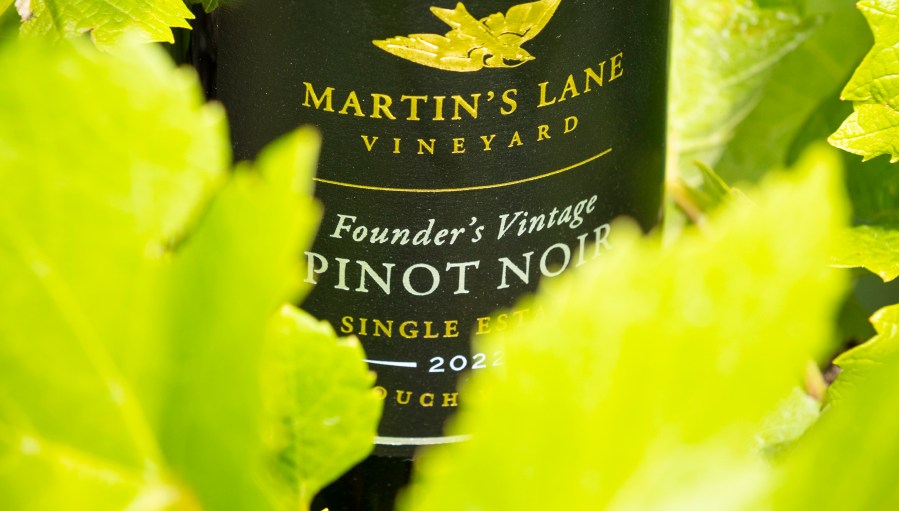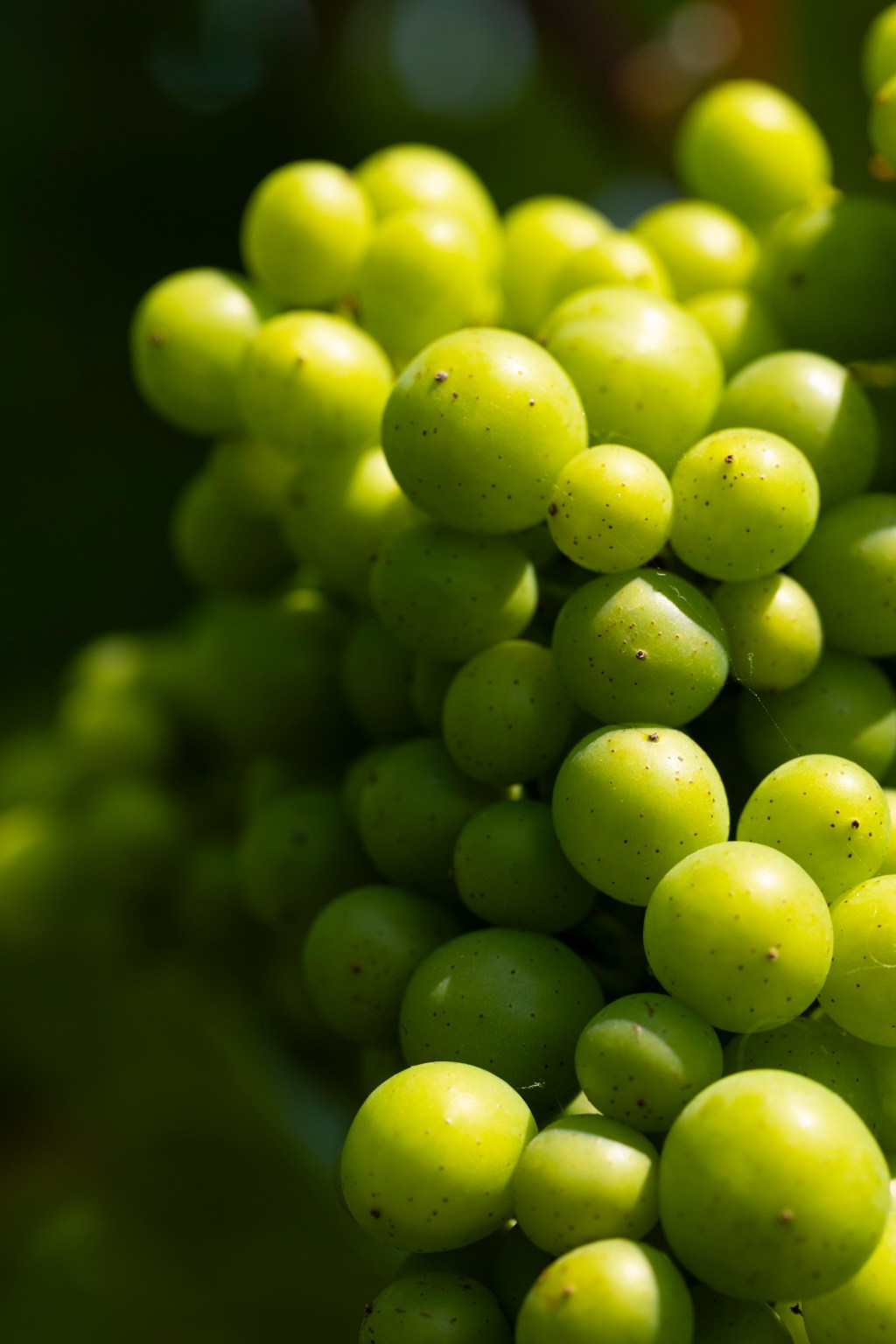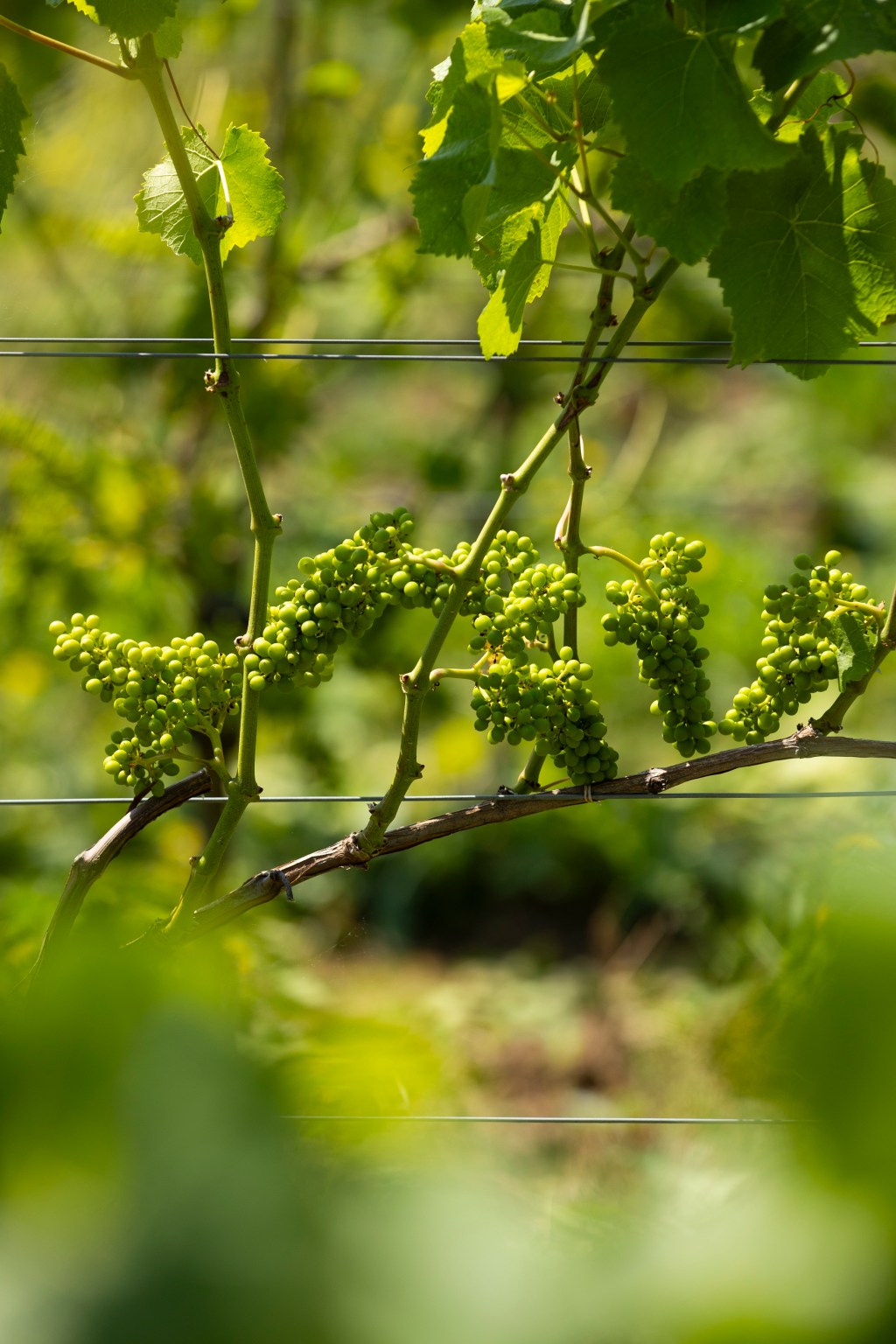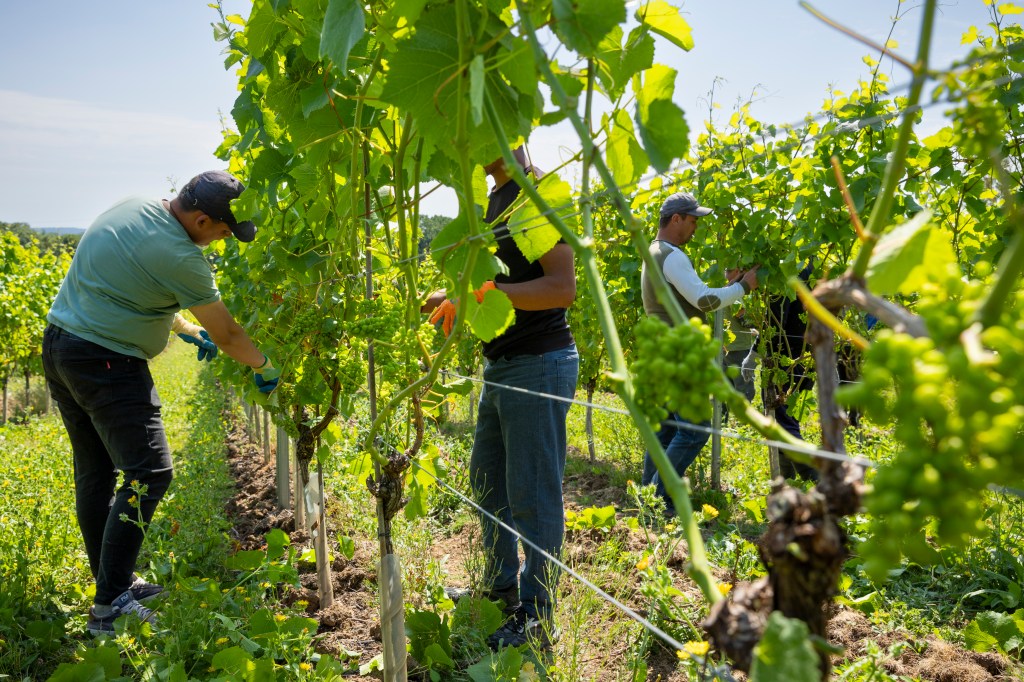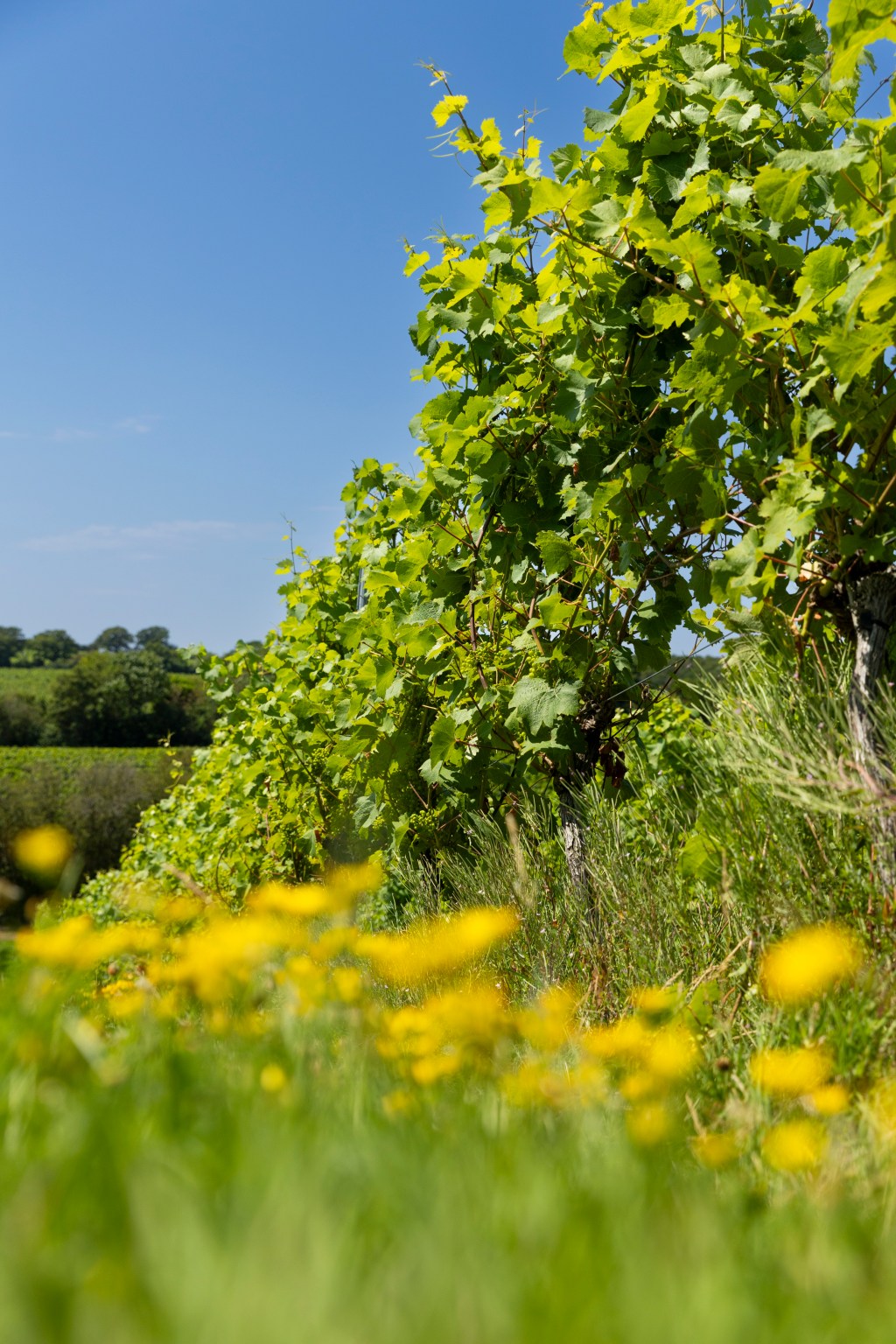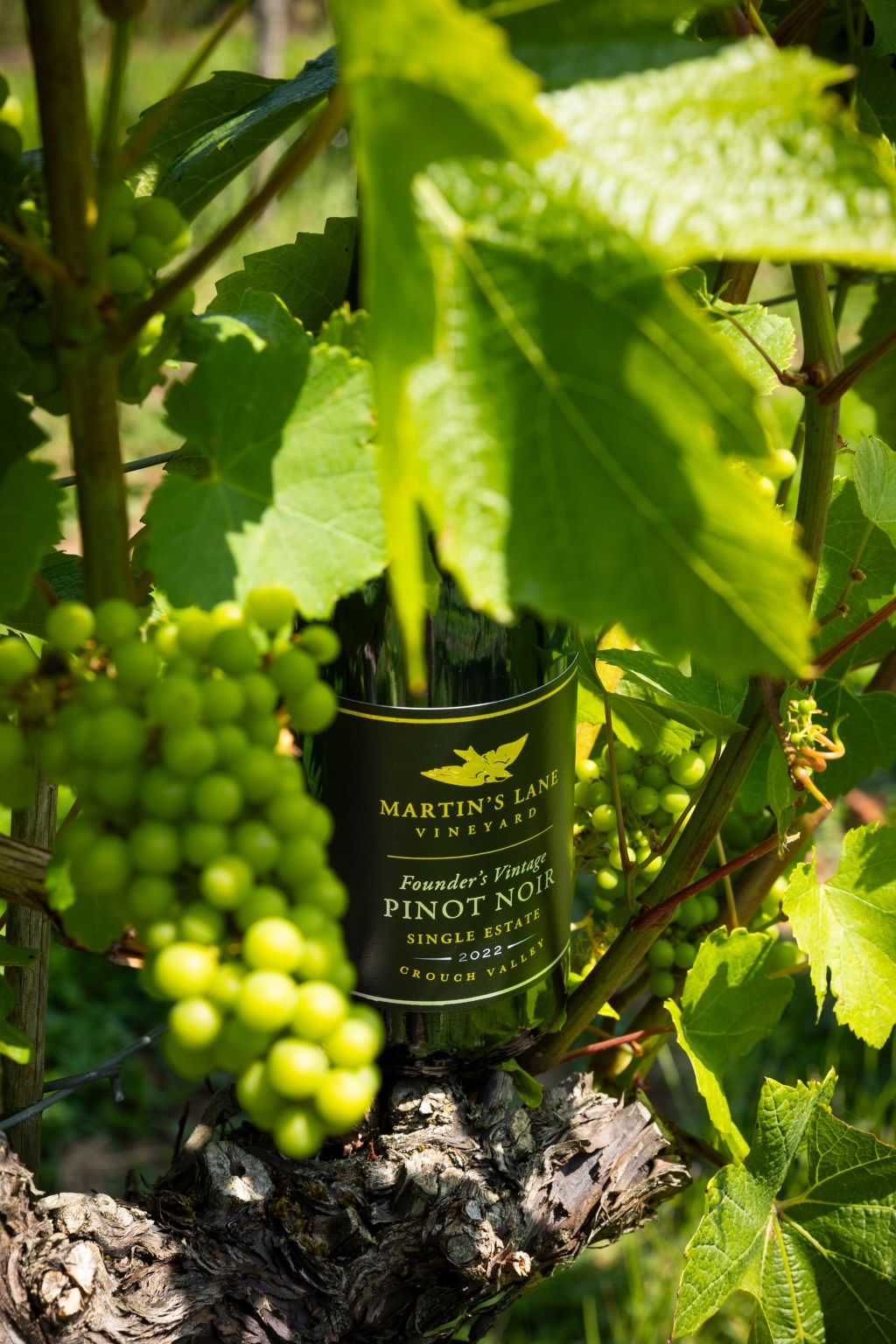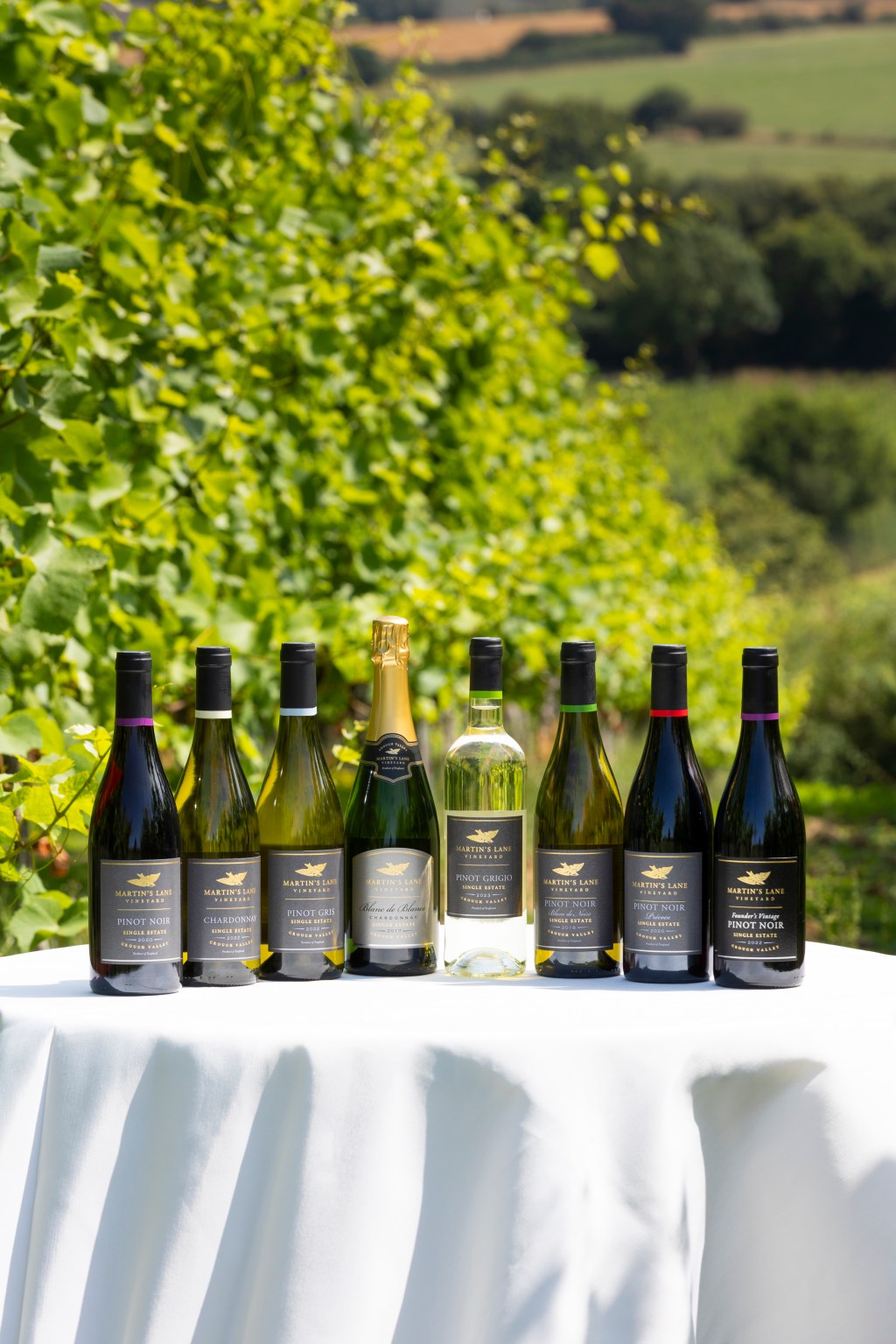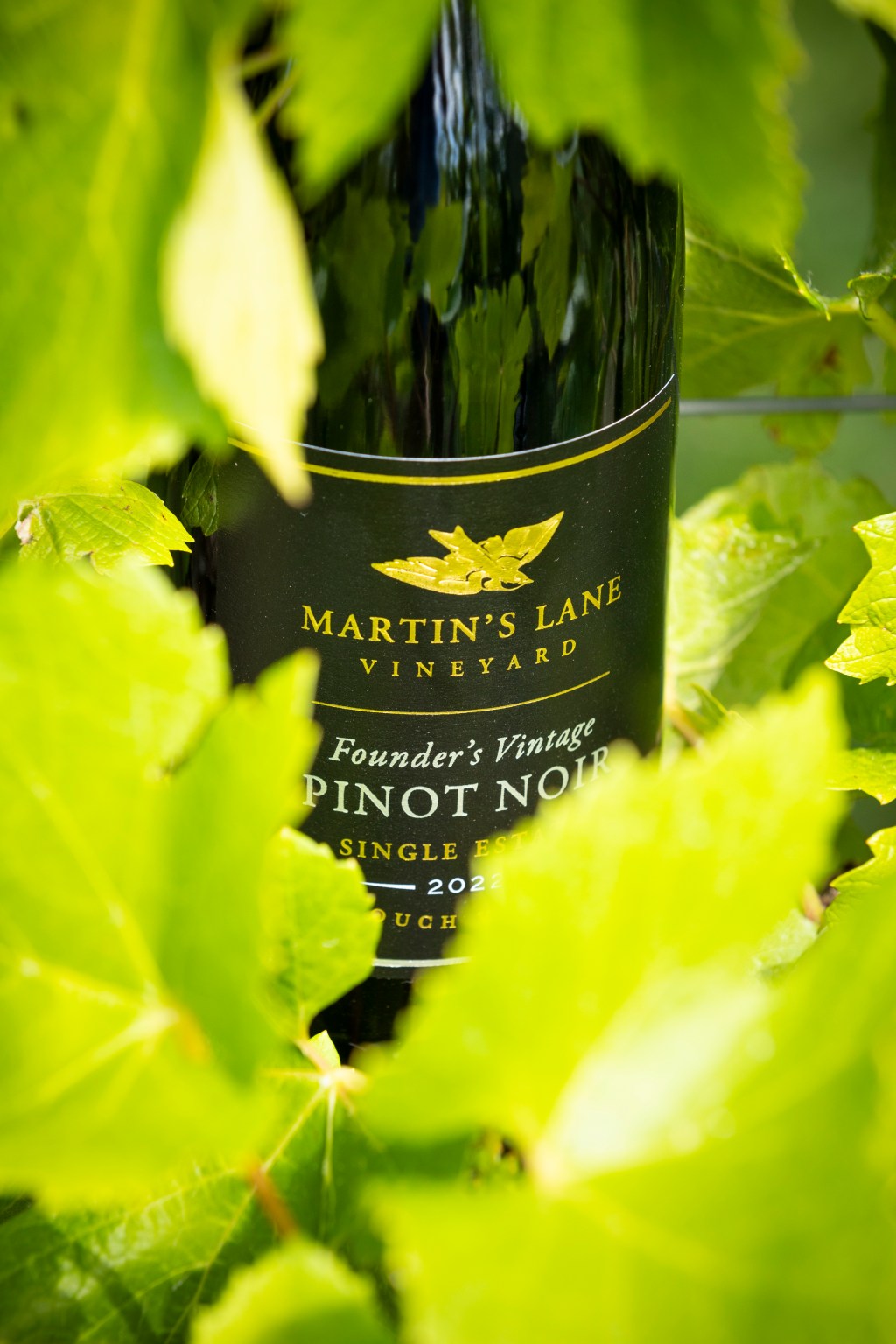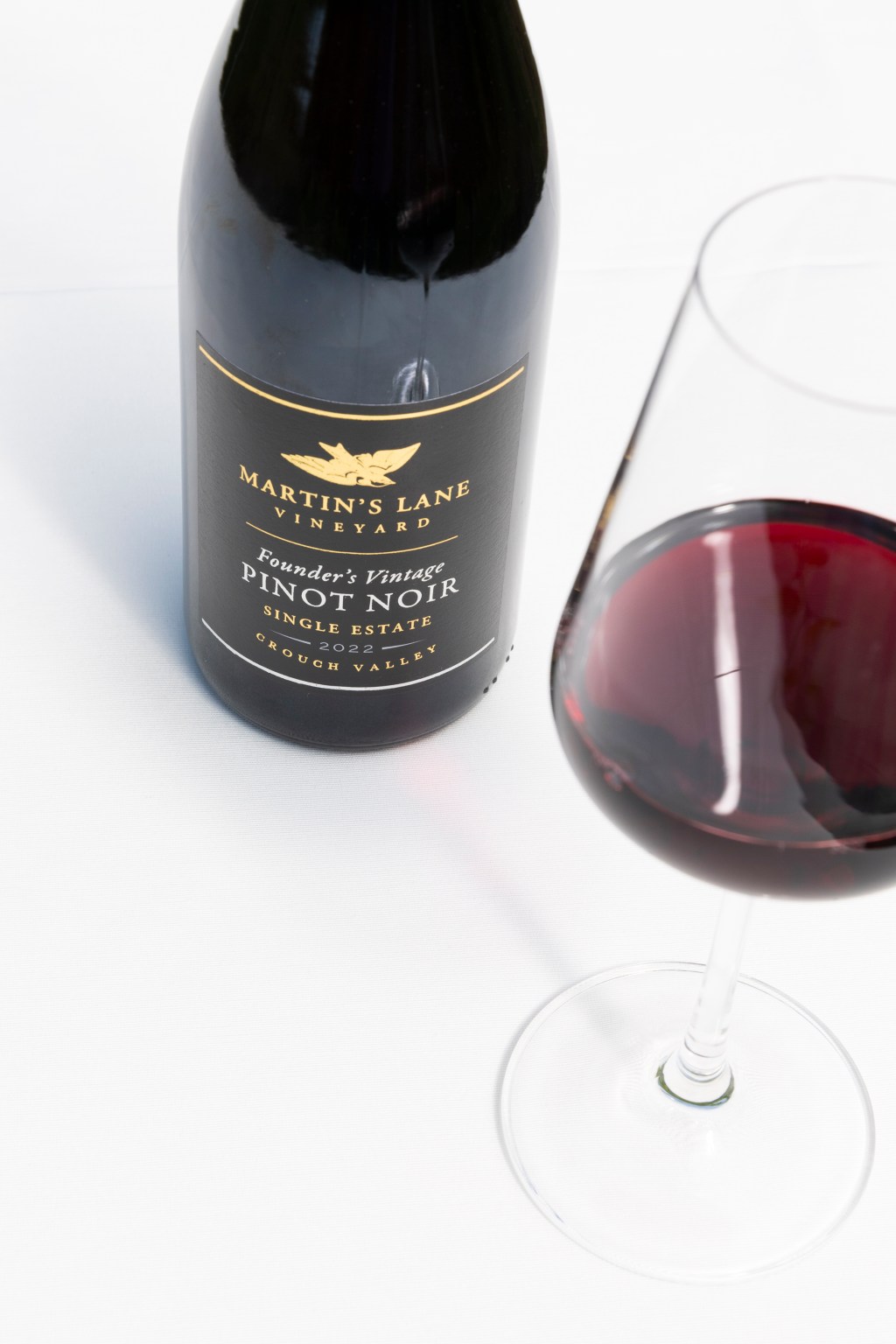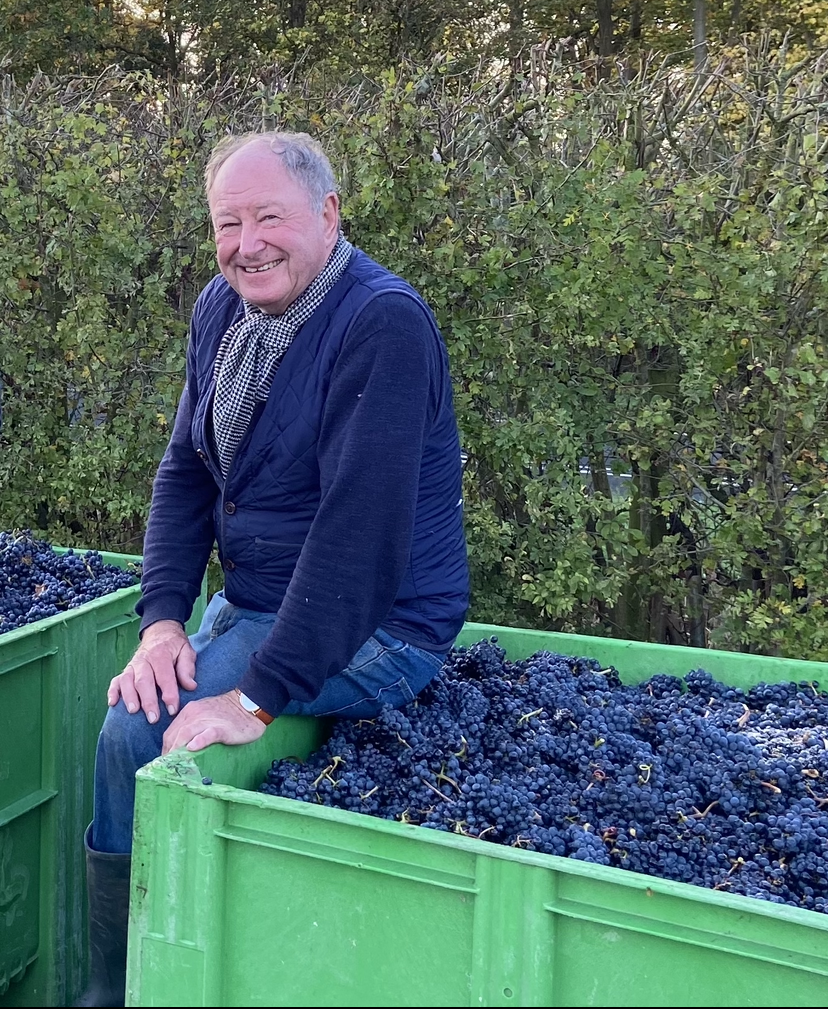The initial inspiration for the vineyard came from Roy Martin and his love of the Crouch Valley. Wanting to protect the area from potentially harmful development Roy gathered a group of eight interested individuals who invested in the initial plot of vines and Martin’s Lane Vineyard was born.
From the initial planting there are now nine plots of vines at Martin’s Lane, all of which were planned and laid out by Roy Martin. “Roy was meticulous in everything in the vineyard,” said Graham Martin, one of the original founding partners of Martin’s Lane. Roy had always had the intention of growing the very best quality grapes to produce the very best quality wine but sadly Roy died unexpectedly in 2023. Graham Martin has proudly taken on the day to day running of the vineyard, he was not only a fellow founder but Roy’s cousin and friend. The principle of growing the very best quality grapes is still the very heart of Martin’s Lane. “He is a hard act to follow but I want to keep running the business in the way he intended. We will continue to produce the highest quality fruit,” he said.
“It has been a steep learning curve,” said Graham. “Roy had a forensic approach, was knowledgeable and he was always reading, keeping up to date with the latest research and thoughts,” he added.
Graham and his wife Caroline now spend most of their time managing the day to day tasks in the vineyard and they credit the help and support of Duncan McNeill, founder of vineyard services company MVM, together with John Worontschak of Litmus wines, with helping them navigate through some very difficult times.
Both Duncan and John have worked with Martin’s Lane from the beginning and over time their expertise has helped the development of the vineyard. That development has been significant with new plantings every year from 2010 through to 2014. The most recent vines were planted in 2020. The fact that the vines were planted over a significant number of years has allowed Martin’s Lane to be adaptable with the plantings.
“Originally the plantings were designed for sparkling wine with the rootstocks as SO4 and the red pinot clones selected as A2107 and the Germanic clone GM1, but this was before we really understood the potential of the Crouch Valley as a wine growing region in England,” said Duncan.
After that initial planting Roy and Duncan allowed Mother Nature and the university of experience to guide them with future plantings and so the story of Martin’s Lane really has two beginnings.
The initial purchase and planting of the vineyard on land that had not been in agricultural production since the 1940s was one starting point but there was also the point at which those involved with Martin’s Lane recognised that there was something extraordinary about the grapes coming from this land.
“The turning point was 2013, we had some contact from John Worontschak the winemaker and he explained that it was a waste to use the Pinot grapes from plot 1 for sparkling wine as the quality was so good,” said Graham.
“In 2012 I was managing 30 acres in the Crouch Valley but also doing consultancy work in Kent, Sussex and Surrey as well as Essex,” explained Duncan. Whilst working across multiple counties Duncan noticed that the grapes from the Crouch Valley were different to those being grown elsewhere. “It became clear that the grapes in the Crouch Valley were ripening earlier than those of the other counties and that the yield from the Crouch Valley was higher,” said Duncan.
Several scientific research papers have been published in recent years that have confirmed and explained the suitability of the Crouch Valley for English grape production. When Martin’s Lane was first planted it was one of only a handful of vineyards located there but now nearly thirty vineyards are in the area with California based Jacksons Family wines also investing in the Crouch Valley.
After these observations in 2013 Duncan and Roy worked together and subsequent plantings of Pinot Noir utilised different clones such as F105s and FR1801. “These clones allow for longer hangtime through the slightly greater skin thickness meaning that the berries are able to achieve maximum ripeness. The FR1801 particularly allows the development of excellent colour,” explained Duncan.
Since 2013 there have been other significant milestones in still winemaking at Martin’s Lane. “In 2015 it became apparent that the Chardonnay was outstanding. Without any crop thinning the crop was hitting 88° Oechsle,” Duncan explained. The lack of wind chill in this plot of Chardonnay was a significant factor in these numbers. Duncan points to aromatic chardonnay clone FR155 and 809 in plot 3 planted in 2012 as his favourite on the site due to the flavours that it can produce.
“This season has had even greater mildew pressure than 2021,” explained Duncan and it is clear that as the vineyard manager he has a deep insight into the history of the site at Martin’s Lane. His attachment to the vineyard is strengthened by the strong bond that he had developed with Roy over the years. As Duncan talks in depth about each and every part of the 20 acres of vines he makes it clear that the village of Stow Maries where the vineyard is located has never had a frost event. The highest temperature recorded at the vineyard was 42°C in 2022 and in 2020 the Pinot Noir reached a ripeness of 98° Oechsle. These facts only serve to show that whilst there is no such thing as a regular season there is huge wine making potential in this picturesque part of Essex.
Duncan pointed out that there are many obvious pests in vineyards across England and Wales such as deer and birds but in the Crouch Valley there are also voles. “In some areas vines less than five years old were dying and it became apparent that vines were suffering from subterranean root feeding by voles,” he said. “My colleague Dan Stephens identified that those vines planted on the rootstock 125AA were at greater risk.” On further investigation Duncan realised that this rootstock has a greater tap root system and fewer fibrous roots than other rootstocks so was more vulnerable to the attack from these root feeding rodents. Over his time within the Crouch Valley Duncan has continually increased his knowledge of the area “I learned a lot from Roy and Martin’s Lane. It was a privilege to work with him,” said Duncan with warmth and emotion in his voice.
As the quality potential became ever more apparent the vineyard team at Martin’s Lane worked to reduce yield to around 2.5 tonnes per acre for the Pinot Noir, Chardonnay and Pinot Gris vines. The yield is controlled using two passes. The first pass reduces the number of bunches to 10 per vine and then a second pass is made part way through veraison when the shoulders are removed. Graham described working with low yields to increase quality as “tightrope walking.” It leaves little room for errors or problems.
The benefit to the grapes and the wines made from them led John Worontschak to say that the Pinot Noir of 2022 was the best he had worked with in 40 years. Graham had an emotional note in his voice when he mentioned that shortly before he died Roy had received an email from John in June 2023 stating that he had tasted the barrel and it was excellent. In memory of the man who had constantly worked so hard to improve quality year on year 1,000 bottles were produced from the Pinot Noir 2022 named Founders Vintage. Graham pointed to this wine as his favourite wine from Martin’s Lane, “it is the pinnacle,” he said.
It is not just the winemaker for the Martin’s Lane own label wines that has been influenced by the quality of the fruit. Martin’s Lane supplies grapes to urban wineries and other vineyards.
Gavin Carver who runs Freedom of the Press Winery in Minster Lovell, Oxfordshire said: “The very first thing my consultant, John Worontschak, said to me when I set up Freedom of the Press was that if I wanted the best quality fruit I should look to the Crouch Valley, and Martin’s Lane in particular. Roy was kind enough to carve out a small allocation for me, (it was during Covid-19 and many producers were uncertain about committing). Thankfully I’ve managed to increase my original allocation little by little, and those grapes have been central to my mission to make some of the finest still wines in England.
“The quality of the fruit from Martin’s Lane is impeccable, not only fully ripe and healthy, but with incredible flavours and balance. This fruit has certainly been the driver to achieving consistently high quality wines.
“When I started Freedom of the Press – I was new to winemaking – I tasted a lot of English wines. It was the quality of wines made from Martin’s Lane fruit that convinced me we had the most exciting wine industry around. I had no idea we could make wines of such complexity, elegance and balance in England. Because of that I took the plunge myself and I hope I’m now also carrying that flag forward using Martin’s Lane fruit in my wines.’
The Martin’s Lane wines are available from the vineyard and are also available at some prestigious on trade premises alongside off trade premises including Fortnum and Mason. A review of the Founders Vintage 2022 Pinot Noir by Dr Jamie Goode declared that Martin’s Lane “is as close to a grand cru vineyard as you can get in the UK.”
Every year the vineyard receives numerous enquiries for fruit. For people who had never met Roy Martin the depth of his support and passion for the English and Welsh wine industry can be seen in the fact that he would always try and prioritise requests for fruit from growers that had suffered frost damage, “he tried his best to help those whose vines had suffered from frost,” said Graham. This statement may seem simple but holds a depth of meaning that explains why those who knew Roy were so deeply fond of him. There are several wines from different vineyards that will be released in Roy’s memory providing a fitting tribute to a man who had a real passion for the industry.
Roy was deeply invested in the Crouch Valley area and its potential as a wine producing region. “Martin’s Lane was the first wine to add the Crouch Valley to the wine label,” said Graham and although Roy always wanted the wines to speak for themselves when the Essex Wine Awards began he was eager to support this event.
Graham and Caroline are also passionate about raising the profile not only of Martin’s Lane but also the Crouch Valley. They operate Crouch Valley Wine Tours, a company that offers tours of the vineyards of the Crouch Valley including some of their near neighbours and on the scorching hot day that Vineyard Magazine visited Martin’s Lane the generosity and warm welcome extended by Graham and Caroline indicated that visitors on these tours will really see not just the Crouch Valley but English wine at its very best. “The tours have helped us to educate people about the great quality wine that is coming from the Crouch Valley,” said Caroline. Tours can be specifically tailored to the demands of the group and in a large group there are bound to be different requirements but “I truly believe there is something for everyone in the Crouch Valley,” she added. On another positive note Caroline continued: “English sparkling wine is well accepted and although English Still wines have a way to go, we get less people tell us that English and Welsh wine is expensive now.”
Visiting Martin’s Lane was a privilege and as the visit came to a conclusion it was hard to leave this wonderful vineyard that takes its name not from the surname of Roy and Graham but instead from its location. The vineyard is situated on land that historically connected Upper Martin Farm to Lower Martin Farm suitably named Martin’s Lane. It is fitting that the name of this vineyard that continually strives for the production of the highest quality grapes connects itself to the history of land on which it is located. A deep and passionate connection to the outstanding area of the Crouch Valley will ensure that the reputation of Martin’s Lane Vineyard will continue to flourish just like the vines that beautify the landscape.
- Duncan McNeill
- Graham and his wife Caroline
- Roy Martin
For more like this, sign up for the FREE Vineyard newsletter here and receive all the latest viticulture news, reviews and insight

